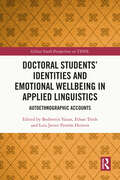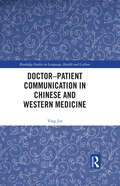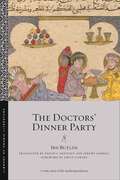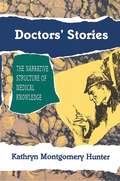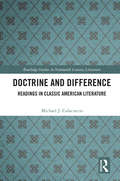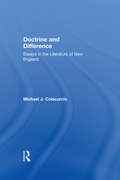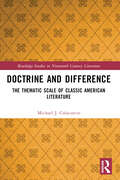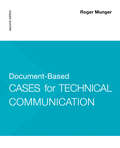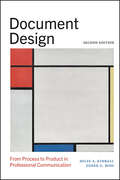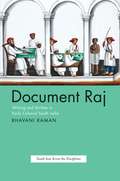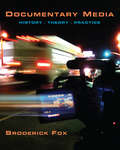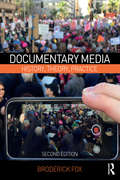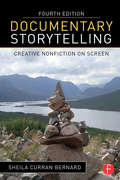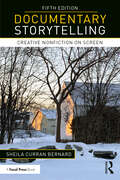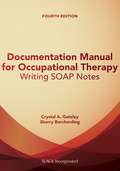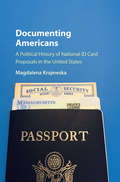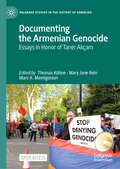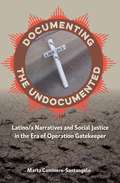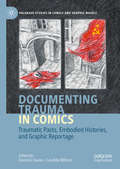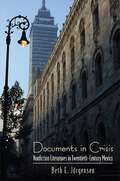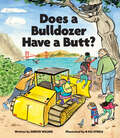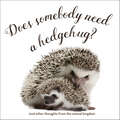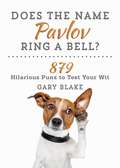- Table View
- List View
Doctoral Students’ Identities and Emotional Wellbeing in Applied Linguistics: Autoethnographic Accounts (Global South Perspectives on TESOL)
by Bedrettin Yazan Ethan Trinh Herrera, Luis Javier PentónThis edited volume comprises an insightful collection of international autoethnographies from doctoral candidates in the field of applied linguistics, narrating and analyzing their student experiences to problematize and challenge the dominant and oppressive cultures of academia. Through 12 select contributions, the book examines the intersection of identity work and emotional labor in the doctoral student journey, sharing insights into the potential of autoethnography for self-reflection, community building, and healing in doctoral studies. Contributors examine their doctoral journeys through personal narratives and testimonials to understand their own experiences, agency, identity, and emotions, encouraging current or former doctoral students to engage in the critical reflection of their own experiences. Chapters are divided into four themes: interrelating multiple identities, navigating and negotiating in-betweenness, engaging emotions and wellbeing, and establishing support systems. Offering unique perspectives from a global spread of PhD candidates, this book will be highly relevant reading for researchers and prospective or current doctoral students of applied linguistics, language education, TESOL, and LOTE. It will also be of interest to those interested in higher education, dissertation research and autoethnography as a method.
Doctor–patient Communication in Chinese and Western Medicine (Routledge Studies in Language, Health and Culture)
by Ying JinDrawing on naturally occurring doctor– patient conversations in real- life medical consultations, this book analyzes the similarities and differences in doctor– patient communication and patient satisfaction between traditional Chinese medicine (TCM) and Western medicine (WM) practiced in China. Little research is available looking at WM being practiced in Asian countries, and misunderstanding about Eastern medicines such as TCM can result in unwarranted claims and suspicions. This volume contributes to research on doctor– patient communication by exploring the communication behaviors between doctors and older patients who are able to communicate independently in both TCM and WM practiced in mainland China and evaluating patient satisfaction with their medical experiences. The book reports findings and insights from three independent and methodologically diverse studies, drawing on data from 69 real- life medical consultations: 30 from TCM and 39 from WM. Using conversation analysis, the Roter Interaction Analysis System, and both quantitative and qualitative methods, Ying Jin examines the differences between TCM and WM to help reveal the dynamics of doctor– patient interactions, the contextual details, and the impact of the clinical culture on medical communication. This insightful book will appeal to scholars and students from linguistics, language, and health communication as well as medical practitioners interested in doctor– patient communication and intercultural communication. The findings reported here will shine a light on the relationship between clinical differences, health communication, and patient outcomes.
The Doctors' Dinner Party (Library of Arabic Literature #85)
by Ibn BuṭlānA witty satire of the medical professionThe Doctors’ Dinner Party is an eleventh-century satire in the form of a novella, set in a medical milieu. A young doctor from out of town is invited to dinner with a group of older medical men, whose conversation reveals their incompetence. Written by the accomplished physician Ibn Buṭlān, the work satirizes the hypocrisy of quack doctors while displaying Ibn Buṭlān’s own deep technical knowledge of medical practice, including surgery, blood-letting, and medicines. He also makes reference to the great thinkers and physicians of the ancient world, including Hippocrates, Galen, and Socrates. Combining literary parody with social satire, the book is richly textured and carefully organized: in addition to the use of the question-and-answer format associated with technical literature, it is replete with verse and subtexts that hint at the infatuation of the elderly practitioners with their young guest. The Doctors’ Dinner Party is an entertaining read in which the author skewers the pretensions of the physicians around the table.An English-only edition.
Doctors' Stories: The Narrative Structure of Medical Knowledge
by Kathryn Montgomery HunterA patient's job is to tell the physician what hurts, and the physician's job is to fix it. But how does the physician know what is wrong? What becomes of the patient's story when the patient becomes a case? Addressing readers on both sides of the patient-physician encounter, Kathryn Hunter looks at medicine as an art that relies heavily on telling and interpreting a story--the patient's story of illness and its symptoms.
Doctrine and Difference: Readings in Classic American Literature (Routledge Studies in Nineteenth Century Literature #2)
by Michael J. ColacurcioDoctrine and Difference: Readings in Classic American Literature aims to expand and deepen the inquiry begun in the volume from 2007. Beginning with an essay on the avowedly Puritan poetry of Anne Bradstreet and ending with two not-quite-secular novels from late in the 19th century, this volume seeks to uncover the religious and philosophical meanings deeply embedded in so much of 19th century American literature, and then, importantly, to identify and analyze the techniques by which the "doctrines" are differentiated into imaginative literature. Poe, Emerson, Thoreau, Hawthorne, Melville—and yes, even Howells and James—are driven by powerful thematic intentions. But they do not preach: they dramatize. And, as they talk their way through their existential issues, they often talk to one another: yes, no, maybe, ok but not so fast. Stressing the idea of a shared, poet-Puritan inheritance, the new Doctrine and Difference means to re-confirm the vitality of literary history and, in particular, the importance of reading the classic texts of American literature in context and in relation.
Doctrine and Difference: Essays in the Literature of New England (Routledge Studies In Nineteenth Century Literature Ser. #2)
by Michael J. ColacurcioFirst published in 1997. Routledge is an imprint of Taylor & Francis, an informa company.
Doctrine and Difference: The Thematic Scale of Classic American Literature (Routledge Studies in Nineteenth Century Literature)
by Michael J. ColacurcioDoctrine and Difference: The Thematic Scale of Classic American Literature aims to expand and deepen our knowledge into the inquiry of “contextual historicism,” observing writers of the American nineteenth century, and their vastly differing approaches to perceptions such as race, gender, and national identity. Ranging from the religious acuities of the first American Puritans to the more secularized literary awakening of the American Renaissance and into late-century texts that deliberately resist the limits of received religious and political opinion, this volume seeks to uncover a history of human thought within classic American Literature. This volume critically observes these survivable works of literature, presenting insight into the “difference” made by conversation, dispute, and dramatized self-doubt within novels and poems of the historical past.
Document-Based Cases for Technical Communication
by Roger MungerWith seven context-rich scenarios and more than 50 sample documents to analyze, revise, and design, this booklet offers students realistic opportunities to practice writing in the workplace. The new edition features a fresh new design and new cases and writing tasks that incorporate online genres and social media tools. A companion Web site provides digital versions of all the documents in the book for students to download and work with as well as new scoring guides for instructors.
Document Design: From Process to Product in Professional Communication (SUNY series, Studies in Technical Communication)
by Miles A. Kimball Derek G. RossIntroduces students to the basic principles and theories of design, combining practical advice about the design process with a foundation in visual rhetoric and usability.Document Design introduces students to the basic principles and theories of design, combining practical advice about the design process with a foundation in visual rhetoric and usability. Most books on document design lean toward either theory or practice. This book offers a balanced approach-theoretically informed practice-that introduces a working vocabulary to help students become reflective practitioners, able not only to create effective designs but also to explain why and how they made their design choices. Derek G. Ross and Miles A. Kimball hope to give students the foundation they need to make design decisions in any rhetorical situation. Students will learn to negotiate between the needs of both users and clients to consider the nuances of audience, purpose, and context.
Document Raj: Writing and Scribes in Early Colonial South India
by Bhavani RamanHistorians of British colonial rule in India have noted both the place of military might and the imposition of new cultural categories in the making of Empire, but Bhavani Raman, in "Document Raj," uncovers a lesser-known story of power: the power of bureaucracy. Drawing on extensive archival research in the files of the East India CompanyOCOs administrative offices in Madras, she tells the story of a bureaucracy gone awry in a fever of documentation practices that grew ever more abstractOCoand the power, both economic and cultural, this created. aIn order to assert its legitimacy and value within the British Empire, the East India Company was diligent about record keeping. Raman shows, however, that the sheer volume of their document production allowed colonial managers to subtly but substantively manipulate records for their own ends, increasingly drawing the real and the recorded further apart. While this administrative sleight of hand increased the companyOCOs reach and power within the Empire, it also bolstered profoundly new orientations to language, writing, memory, and pedagogy for the officers and Indian subordinates involved. Immersed in a subterranean world of delinquent scribes, translators, village accountants, and entrepreneurial fixers, "Document Raj" maps the shifting boundaries of the legible and illegible, the legal and illegitimate, that would usher India into the modern world.
Documentary Media: History, Theory Practice, CourseSmart eTextbook
by Broderick FoxDocumentary Media: History, Theory, Practice facilitates the study of documentary media, its changing forms, and diverse social functions. Fox provides balanced and accessible coverage of the historical, critical, and the practical aspects of documentary media without mandating specialized skills sets in students or access to costly technology. For practitioners and students alike, Documentary Media lays out fundamental concepts and production processes needed to contribute to the contemporary production of non-fiction media in the digital age. Each chapter engages students by challenging traditional assumptions about documentary form and function, posing critical and creative questions, and offering historical and contemporary examples. Additionally, each chapter closes with an "Into Practice" section that assists readers in applying the chapter's concepts. Fox aims to help the student establish a complete treatment, aesthetic plan, and pre-production strategy for their own documentary project.
Documentary Media: History, Theory, Practice
by Broderick FoxIn a digital moment where both the democratizing and totalitarian possibilities of media are unprecedented, the need for complex, ethical, and imaginative documentary media—for you, the reader of this book to think, question, and create—is vital. Whether you are an aspiring or seasoned practitioner, an activist or community leader, a student or scholar, or simply a curious audience member, author Broderick Fox opens up documentary media, its changing forms, and diversifying social functions to readers in a manner that is at once rigorous, absorbing, and practical. This new edition updates and further explores the various histories, ideas, and cultural debates that surround and shape documentary practice today. Each chapter engages readers by challenging traditional assumptions, posing critical and creative questions, and offering up innovative historical and contemporary examples. Additionally, each chapter closes with an "Into Practice" section that provides analysis and development exercises and hands-on projects that will assist you in generating a full project prospectus, promotional trailer, and web presence for your own documentary.
Documentary Storytelling: Creative Nonfiction on Screen
by Sheila Curran BernardDocumentary Storytelling has reached filmmakers and filmgoers worldwide with its unique focus on the key ingredient for success in the growing global documentary marketplace: storytelling. This practical guide reveals how today's top filmmakers bring the tools of narrative cinema to the world of nonfiction film and video without sacrificing the rigor and truthfulness that give documentaries their power. The book offers practical advice for producers, directors, editors, cinematographers, writers and others seeking to make ethical and effective films that merge the strengths of visual and aural media with the power of narrative storytelling. In this new, updated edition, Emmy Award-winning author Sheila Curran Bernard offers: New strategies for analyzing documentary work New conversations with filmmakers including Stanley Nelson (The Black Panthers), Kazuhiro Soda (Mental), Orlando von Einsiedel (Virunga), and Cara Mertes (JustFilms) Discussions previously held with Susan Kim (Imaginary Witness), Deborah Scranton (The War Tapes), Alex Gibney (Taxi to the Dark Side), and James Marsh (Man on Wire).
Documentary Storytelling: Creative Nonfiction on Screen
by Sheila Curran BernardFor nearly two decades, Documentary Storytelling has reached filmmakers and filmgoers worldwide with its unique focus on the key ingredient for success in the global documentary marketplace: storytelling. As this revised, updated fifth edition makes clear, nonfiction storytelling is not limited to character-driven journeys, but instead encompasses the diverse ways in which today’s top documentarians reach audiences with content that is creative, original, and often inspirational, all without sacrificing the integrity that gives documentary its power. This book is filled with practical advice for writers, producers, directors, editors, cinematographers, and others committed to reality-based filmmaking that seeks to reach audiences, raise awareness, address social issues, illuminate the human condition, and even entertain. In this new edition, Emmy Award-winning filmmaker and author Sheila Curran Bernard offers: a closer look at the way ethical nonfiction filmmakers take creative, authorial leaps while also remaining transparent with audiences; new tools for understanding how documentaries are structured, how they may rearrange time for storytelling effect, and how a simple narrative throughline can convey complexity without being a conventional "hero’s journey"; new conversations with filmmakers and educators including Dawn Porter, Madison Hamburg, Tracy Heather Strain, June Cross, Heidi Gronauer, and Julie Casper Roth, and another look at conversations with Stanley Nelson and Orlando von Einsiedel. Please visit the book’s website, available at www.documentarystorytelling.com, for further information, related articles, and more.
Documentation Manual For Occupational Therapy: Writing SOAP Notes (Fourth Edition)
by Crystal Gateley Sherry BorcherdingOne of the most critical skills that occupational therapists must learn is effective documentation. With that idea in mind, Documentation Manual for Occupational Therapy: Writing SOAP Notes, Fourth Edition presents a systematic approach to a standard form of health care documentation: the SOAP note. The clinical reasoning skills underlying SOAP note documentation can be adapted to fit the written or electronic documentation requirements of nearly any occupational therapy practice setting. This new Fourth Edition has been updated to reflect current information essential to contemporary occupational therapy practice, including the AOTA's Occupational Therapy Practice Framework: Domain & Process, Third Edition. Documentation Manual for Occupational Therapy, Fourth Edition also includes the COAST method, a specific format for writing occupation-based goals. Crystal Gateley and Sherry Borcherding use a "how-to" strategy by breaking up the documentation process into a step-by-step sequence. Numerous worksheets are provided to practice each individual skill as well as the entire SOAP note process. In addition, examples from a variety of practice settings are included as a reference. Although this text addresses documentation in occupational therapy practice, the concepts can be generalized across other health care disciplines as well. New in the Fourth Edition: The chapter focusing on reimbursement, legal, and ethical considerations has been vastly expanded to provide an overview of sources of reimbursement, regulatory guidelines, and legal and ethical issues. A new chapter focusing on electronic documentation has been added to illustrate how the concepts presented in this text can be used in various electronic documentation software products. Faculty will have access to 12 videos that can be used for instructional purposes and documentation practice. This edition includes an expanded Instructor's Manual with sample quiz questions for several of the chapters, templates and grading rubrics for documentation assignments, and other instructional resources. Instructors in educational settings can visit www. efacultylounge. com for additional material to be used for teaching in the classroom. Documentation Manual for Occupational Therapy: Writing SOAP Notes, Fourth Edition presents essential documentation skills that all occupational therapy clinicians, faculty, and students will find critical for assessing, treating, and offering the best evidence available for their clients.
Documenting Americans: A Political History of National ID Card Proposals in the United States
by Magdalena KrajewskaThis is the first and only comprehensive, book-length political history of national ID card proposals and developments in identity policing in the United States. The book focuses on the period from 1915 to 2016, including the post-9/11 debates and policy decisions regarding the introduction of technologically-advanced identification documents. Putting the United States in comparative perspective and connecting the vital issues of immigration and homeland security, Magdalena Krajewska shows how national ID card proposals have been woven into political conflict across a variety of policy fields. Findings contradict conventional wisdom, debunking two common myths: that Americans are opposed to national ID cards and that American policymakers never propose national ID cards. Dr Krajewska draws on extensive archival research; high-level interviews with politicians, policymakers, and ID card technology experts in Washington, DC and London; and public opinion polls.
Documenting the Armenian Genocide: Essays in Honor of Taner Akçam (Palgrave Studies in the History of Genocide)
by Thomas Kühne Mary Jane Rein Marc A. MamigonianThis open access book brings together contributions from an internationally diverse group of scholars to celebrate Taner Akçam’s role as the first Turkish intellectual to publicly recognize the Armenian Genocide. As a researcher, lecturer, and mentor to a new generation of scholars, Akçam has led the effort to utilize previously unknown, ignored, or under-studied sources, whether in Turkish, Armenian, German, or other languages, thus immeasurably expanding and deepening the scholarly project of documenting and analyzing the Armenian Genocide.
Documenting the Undocumented: Latino/a Narratives and Social Justice in the Era of Operation Gatekeeper
by Marta Caminero-SantangeloLooking at the work of Junot Díaz, Cristina García, Julia Alvarez, and other Latino/a authors who are U.S. citizens, Marta Caminero-Santangelo examines how writers are increasingly expressing their solidarity with undocumented immigrants. Through storytelling, these writers create community and a sense of peoplehood that includes non-citizen Latino/as. This volume also foregrounds the narratives of unauthorized migrants themselves, showing how their stories are emerging into the public sphere. Immigration and citizenship are multifaceted issues, and the voices are myriad. They challenge common interpretations of "illegal" immigration, explore inevitable traumas and ethical dilemmas, protest their own silencing in immigration debates, and even capitalize on the topic for the commercial market. Yet these texts all seek to affect political discourse by advancing the possibility of empathy across lines of ethnicity and citizenship status. As border enforcement strategies escalate along with political rhetoric, detentions, and deaths, these counternarratives are more significant than ever before, and their perspectives cannot be ignored. What we are witnessing, argues Caminero-Santangelo, is a mass mobilization of stories. This growing body of literature is critical to understanding not only the Latino/a immigrant experience but also alternative visions of nation and belonging.
Documenting Trauma in Comics: Traumatic Pasts, Embodied Histories, and Graphic Reportage (Palgrave Studies in Comics and Graphic Novels)
by Dominic Davies Candida RifkindWhy are so many contemporary comics and graphic narratives written as memoirs or documentaries of traumatic events? Is there a specific relationship between the comics form and the documentation and reportage of trauma? How do the interpretive demands made on comics readers shape their relationships with traumatic events? And how does comics’ documentation of traumatic pasts operate across national borders and in different cultural, political, and politicised contexts? The sixteen chapters and three comics included in Documenting Trauma in Comics set out to answer exactly these questions. Drawing on a range of historically and geographically expansive examples, the contributors bring their different perspectives to bear on the tangled and often fraught intersections between trauma studies, comics studies, and theories of documentary practices and processes. The result is a collection that shows how comics is not simply related to trauma, but a generative force that has become central to its remembrance, documentation, and study.
Documents in Crisis: Nonfiction Literatures in Twentieth-Century Mexico (SUNY series in Latin American and Iberian Thought and Culture)
by Beth E. JörgensenWinner of the 2012 Best Book in the Humanities presented by the Mexico Section of the Latin American Studies AssociationIn the turbulent twentieth century, large numbers of Mexicans of all social classes faced crisis and catastrophe on a seemingly continuous basis. Revolution, earthquakes, industrial disasters, political and labor unrest, as well as indigenous insurgency placed extraordinary pressures on collective and individual identity. In contemporary literary studies, nonfiction literatures have received scant attention compared to the more supposedly "creative" practices of fictional narrative, poetry, and drama. In Documents in Crisis, Beth E. Jörgensen examines a selection of both canonical and lesser-known examples of narrative nonfiction that were written in response to these crises, including the autobiography, memoir, historical essay, testimony, chronicle, and ethnographic life narrative. She addresses the relative neglect of Mexican nonfiction in criticism and theory and demonstrates its continuing relevance for writers and readers who, in spite of the contemporary blurring of boundaries between fiction and nonfiction, remain fascinated by literatures of fact.
Documents of Performance in Early Modern England
by Tiffany SternAs well as 'play-makers' and 'poets', playwrights of the early modern period were known as 'play-patchers' because their texts were made from separate documents. This book is the first to consider all the papers created by authors and theatres by the time of the opening performance, recovering types of script not previously known to have existed. With chapters on plot-scenarios, arguments, playbills, prologues and epilogues, songs, staged scrolls, backstage-plots and parts, it shows how textually distinct production was from any single unified book. And, as performance documents were easily lost, relegated or reused, the story of a play's patchy creation also becomes the story of its co-authorship, cuts, revisions and additions. Using a large body of fresh evidence, Documents of Performance brings a wholly new reading of printed and manuscript playbooks of the Shakespearean period, redefining what a play, and what a playwright, actually is.
Does a Bulldozer Have a Butt?
by Derick WilderGreen Eggs and Ham meets Everyone Poops in this laugh-out-loud story that asks—and answers—the burning question in every kid's life.Does a scarecrow have a butt?Yep, you stuff him with a straw one.And does a crayon have a butt?Nope, but it can surely draw one.This silly, funny, clever book will be the most quoted text in all of elementary school.Over the course of a long walk across a city, one curious kid needs to know: "Does it have a butt?" Everything from sheep to ghosts to dinosaurs is subjected to this all-important question, and Dad is a never-ending source of answers. On a laugh-out-loud father-child ramble, we come to see that every butt, from a bullfrog's to a zombie's, has its own distinctive, and distinctively hilarious, quality.LAUGH-OUT-LOUD FUNNY: It's impossible to find a kid who doesn't giggle at the word "butt." The repetition of the word, the varied assortment of butts, and the clever rhymes make this a book that both parents and children will return to over and over again.A SNEAKY WAY TO TEACH ABOUT CONTEXT: The book isn't simply a repetition of one joke or word. Instead, it offers a crafty way of talking about what things mean in different contexts.SILLY AND SWEET, NOT GROSS: Butt jokes can potentially cross a line and become offensive or insensitive, but the tone and choices throughout this book are sweet and innocent, making it a unique, accessible option for parents and educators who want to normalize the asking of difficult questions.COUNT THE BUTTS! This book will change how you see the world: Not only will you start wondering about all inanimate objects' butts, you'll start seeing them everywhere! There are nearly 200 butts in the illustrations that aren't even mentioned in the text. Keen-eyed young readers will delight in the most hilarious seek-and-find they could ever imagine!Perfect for:• Parents• Grandparents• Educators and librarians• Fans of funny books
Does History Make Sense?: Hegel on the Historical Shapes of Justice
by Terry PinkardHegel’s philosophy of history—which most critics view as a theory of inevitable progress toward modern European civilization—is widely regarded as a failure today. Terry Pinkard’s spirited defense of the Hegelian view, based on a subtle understanding of human subjectivity, will play a central role in contemporary reevaluations of Hegel’s work.
Does Somebody Need a Hedgehug?: And Other Thoughts from the Animal Kingdom
by Gibbs M. SmithQuack up your friends with this effortless gift.
Does the Name Pavlov Ring a Bell?: 879 Hilarious Puns to Test Your Wit
by Gary BlakeEveryone loves wordplay! This collection of more than eight hundred quips and pun-filled anecdotes will have your friends in stitches! Classics and new inventions fill these pages with humor and wit. Divided into chapters according to theme—animals, celebrities, careers, food, and so on—there’s a pun for every occasion! Author Gary Blake dares you not to snicker at his contrivances: Two silk worms had a race. They ended up in a tie. Davy Crockett had three ears. A left ear, a right ear, and a wild frontier. A backwards poet writes inverse. Santa’s helpers are subordinate Clauses. Like tavern owners, ballet dancers make most of their money at the barre. Horses in the movies only have bit parts. Why does the Pope travel so much? Because he’s a roamin’ Catholic. Absinthe makes the heart grow fonder. A Freudian slip is when you say one thing and mean your mother. Eve was the first person to eat herself out of house and home. I used to work in a blanket factory, but the company folded. The calendar thief only got twelve months. A great gift or coffee table book, there’s no time like the present to order a copy of Does the Name Pavlov Ring a Bell? for the word-twisting, pun-loving humorist in your life.
